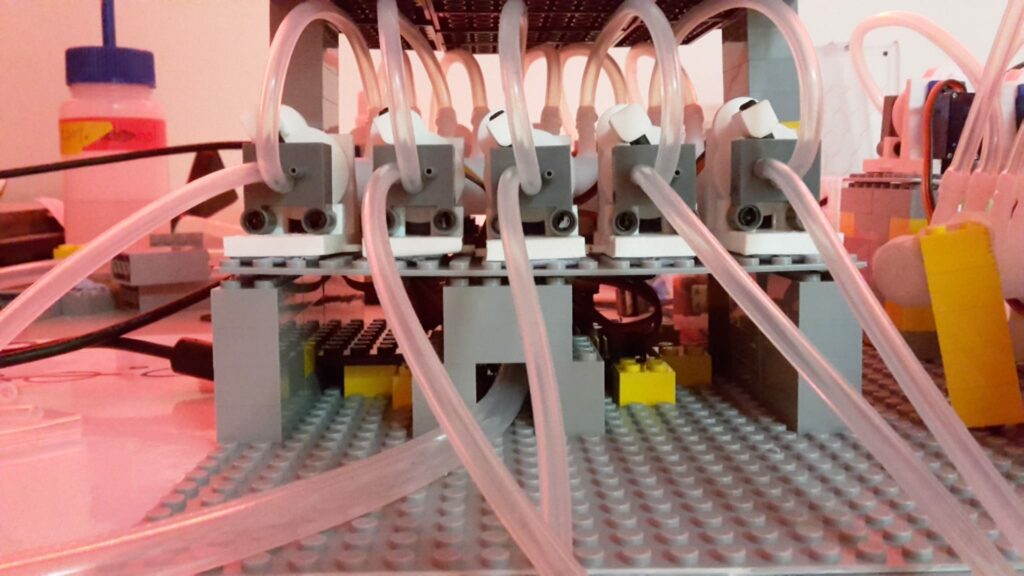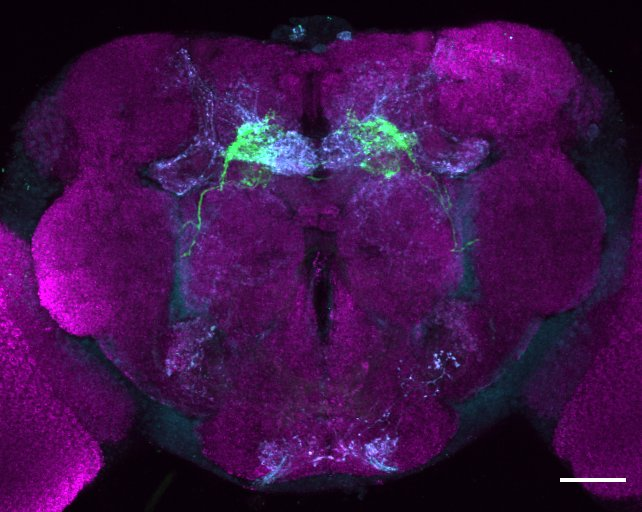Sensory processing during sleep in Drosophila Melanogaster
One of the most puzzling aspects of sleep is that it cannot happen without depriving us of our full conscious experience. Whatever the function of sleep is, it cannot be achieved without disconnecting our brains from the external world. A full conscious state and sleep are not compatible, it seems, to the point that one of the definitions of consciousness is that “it is all that fades away when we are in dreamless sleep”.
The fact that the brain has to surrender to the tyranny of sleep is also the main reason why scientists believe (in a rather dogmatic fashion) that sleep is “of the brain, by the brain for the brain“. Yet, even during sleep parts of our brains retain some ability to process external information. In the 1960s, Oswald et al formally showed that sleeping humans could wake up in response to some salient stimuli, such as their names being called, but not in response to stimuli of identical strength but no salience, such as other people’s names or their names played in reverse.

This finding has been confirmed and extended over the decades in the scientific literature, providing evidence that it applies to even more complex nuances of saliency, such as an angry tone of voice. The videos below suggest that scientific literature is certainly less comprehensive and (less amusing) than the phenomenon in its entirety.
Even though we have numerous scientific and anecdotal evidence that animals and humans can wake up to salient sensory stimuli during sleep, hardly anything is known about the biological underpinning of this phenomenon. And here: enter Drosophila melanogaster! What better animal model than flies to dissect this amazing brain property?
In a paper titled “Sensory processing during sleep in Drosophila melanogaster” published in Nature, we introduce flies as the ideal animal model to dive into the biology of how a brain can simultaneously be asleep and respond to external stimuli.
Postdoc Alice French took the lead on this amazing project to show that even flies can recognise salient stimuli in their sleep and react accordingly, modulating their response based on their internal state. We initially expanded the robotic platform we had previously built in the lab, called ethoscopes, which allows us to monitor and interfere with flies using inexpensive @Raspberry_Pi computers. Alice wanted to build a robotic component able to challenge single flies with specific odour but only while they were asleep, to record whether they would wake up or not. She obviously started with…. LEGO!


In our first prototype, we built a robot able to operate a LEGO valve so to send a puff of air to the sleeping fly. LEGO valves were a good start because we needed 500 of them.
The system worked and we went from those early all-LEGO prototypes (left) to the final 3D printed product (right).


Using this ethoscope module we could challenge sleeping flies with different odours and check whether they would respond differently to some of them. We found they did! Flies would respond to 5% acetic acid for instance, but not to 10% acetic acid. Not only that, the valence of the odour could be modulated by internal states. Flies that had received a little starvation were increasing their response specifically to food-related odours. When we gave alcohol to flies, on the other hand, we found drunk Drosophilae were less responsive to odours in general showing somehow a deeper sleep state.
Now, flies are arguably the best animal model to study circuit neuroscience these days. We have a full connectome of the fly brain and countless genetic tools that allow us to turn neurons on and off. So that is what we did. We started turning neurons on and off in the fly brain, looking for some that would modulate their ability to sense stimuli during sleep. We found them!

We actually found the whole circuit, connecting the “fly nose” all the way to the sleep centers in the brain. And when we used thermogenetics to switch those neurons on or off with infrared radiation, we could interfere with that process and make the flies more or less responsive.
In short, we have shown that flies can recognise and respond to odours during sleep, waking up only to those that they consider salient. We also show that this phenomenon is plastic and modulated by internal states, with animals being more likely to wake to food odours after a little starvation. We also described a blueprint for a neuronal circuit that connects the peripheral olfactory receptor neurons all the way to known sleep-regulating centres in the fly brain. We explore three prototypical gate-points that modulate subconscious processing of olfactory information during sleep: two at the periphery and one in the central brain.
The story is important and of general interest for at least three reasons:
- for the groundbreaking implications it has on the consciousness field, introducing flies as a model to study
subconscious processing of information, and providing an experimental paradigm that allows to empirically face some key questions of the field; - for the implications it has on the sleep community, describing the neuronal circuit regulating sensory processing during sleep, a neuronal feature that is poorly understood in any other animal model. Our description of the circuit regulating sensory processing during sleep is the most accurate to date and the work also potential future medical significance, for instance in the study of altered states of consciousness, such as coma;
- for the implications it has on the larger neuroscience community, describing how a circuit modulates the processing of sensory information to distinguish valence.
Drosophila has been employed to study arousal threshold many times before. There are many studies in which flies can be used to gauge sleep “depth” by using quantitative mechanical stimuli, such as simple vibration or touch. Our study is the first one to study a more puzzling property: how do we recognise qualitative stimuli during sleep? How do we recognise our own name while unconscious?
The video abstract below provides more information on the contents and the implications of the work.
The full reference to the paper is:
- French AS, Geissmann Q, Beckwith EJ, and Gilestro GF*
Sensory processing during sleep in Drosophila Melanogaster
Nature 2021 Sep 29; 597(5)
The work was supported by BBSRC and H2020-Marie Curie funding. The lead author of the study is Dr. Alice French.
Nature has featured the paper with a dedicated News & Views by Wahne Li and Alex Keene.
Imperial wrote a little PR piece.
